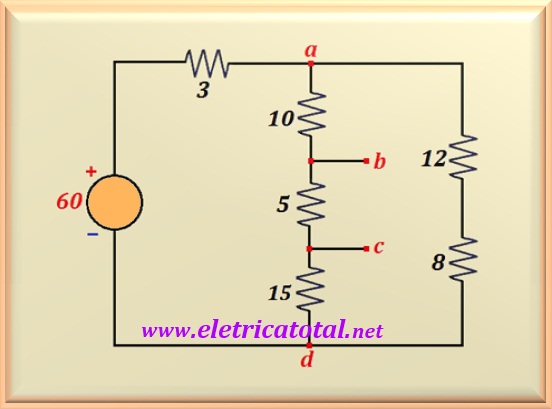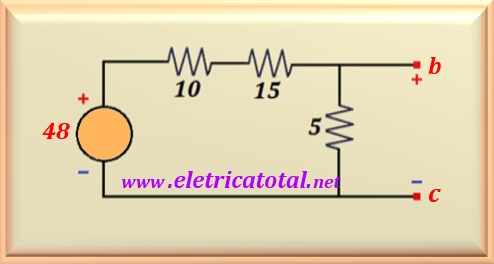Problem 10-14 Source:
Problem elaborated by the author of the site.
Use a voltage divider and calculate the voltage Vbc in the
circuit show in Figure 10-14.1.
Solution of the problem 10-14
Apparently this problem seems to be the same as before. However, one can
that there is a resistor of 3 ohms in series with the set of resistors
of the previous problem. This modifies the way to solve this problem.
It should be understood that there will be a voltage drop in the resistor of 3 ohms.
To calculate this voltage drop, you have to calculate which
equivalent resistance between points a - d. The branch containing
the three resistors in series generates a single resistor of value equal to
R '= 5 + 10 + 15 = 30 ohms. The other branch generates another value resistor
equal to R '' = 8 + 12 = 20 ohms.
Now, by computing the parallel between R' and R'':
Performing the calculation:
Using a voltage divider, the value of Vad:
From this moment the solution is the same as the previous problem, except that
the voltage is 48 volts and not 60 volts. See the Figure 10-14.2 for the
circuit.
Let's apply the equation of the voltage divider.
This modification in this problem was intended to show how a series resistor
modifies the voltage at a point of the circuit passing from 10 volts
(result of the previous problem) to 8 volts (result of this problem).



